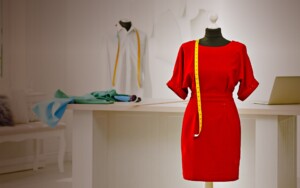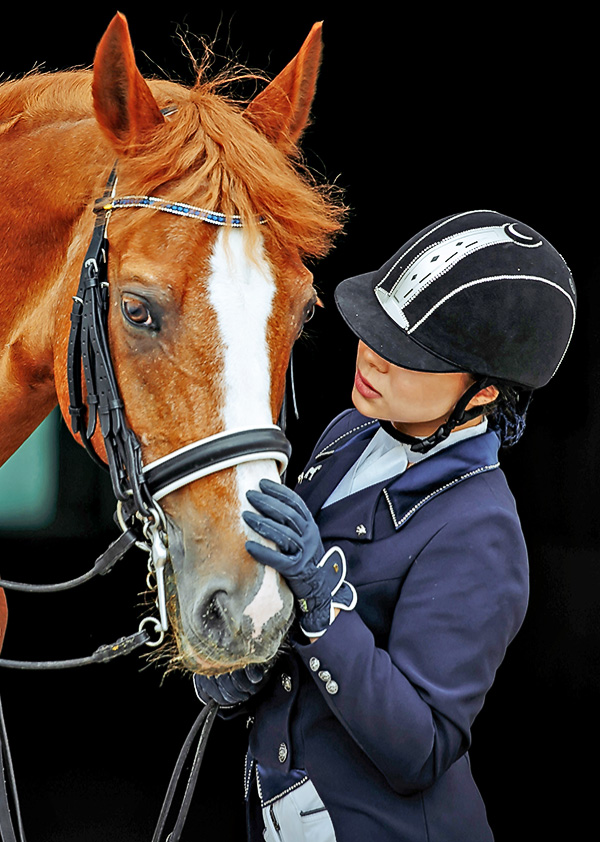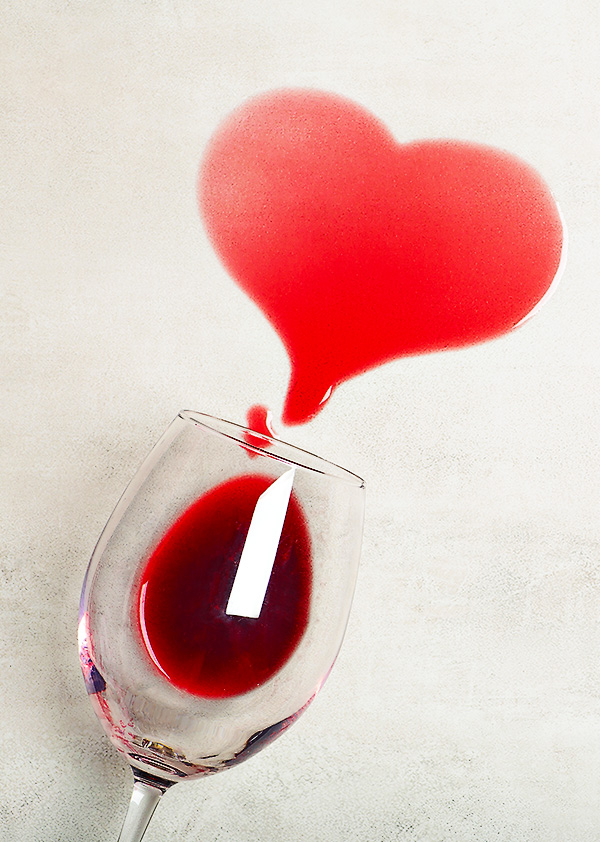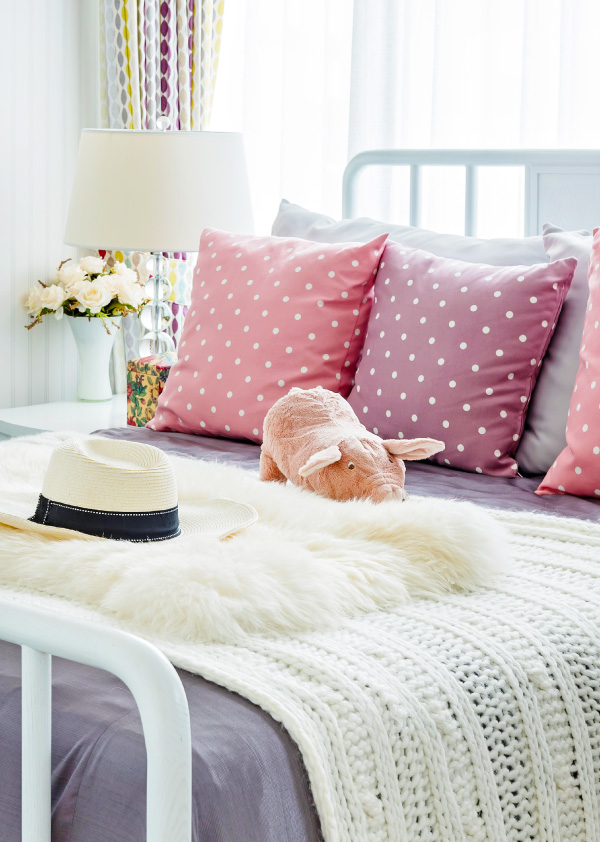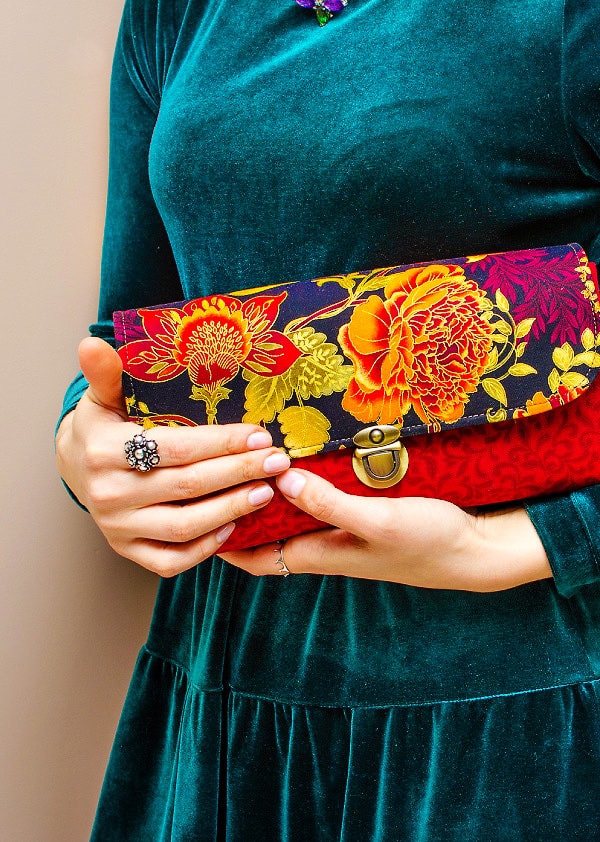Blog
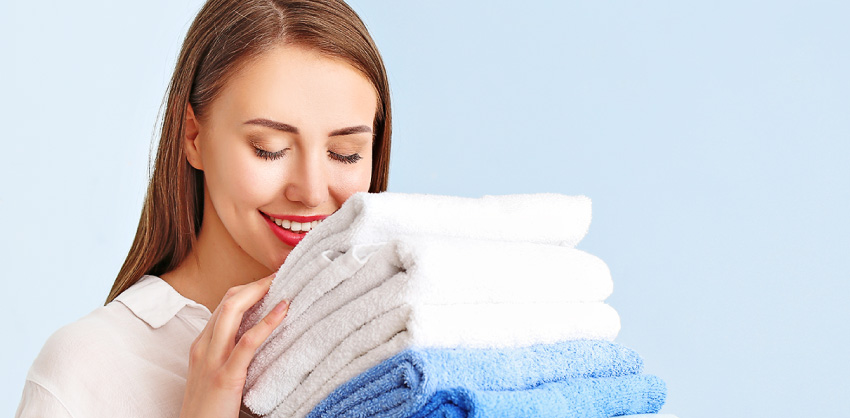
The Mystery of the Odor
Where does the odor come from? What is it caused by? Why do substances have different smells? These questions have worried people long for eternity with no clear answer. This mystery was born together with human race.
Smell is the only one of all our five senses, the nature of which is still not fully understood by scientists.
Recently there is a growing belief that smell is associated with electromagnetic vibrations of molecules. Scientists have to put additional efforts to turn hypotheses into proven theories.
Michael V/. Lomonosov was the first who pitched an idea about the true nature of odor, and nowadays the majority of scientists adhere to it. As long ago as 1765 he wrote about oscillative (rotary) movements of ether’s particles as a irritant for organ of senses, including sight and smell.
However, the human being uses smells for several millennia, creating different fragrances. The creations of craftsmen in ancient civilizations surprises us even now.
During the excavation of the Egyptian pharaoh King Tut Tomb there were found balms and fragrances which have kept their marvelous aroma till nowadays.
Odors surround. According to the researchers, the sense of smell allows people to catch on only 2 to 10% of incoming information, but in the mean time, it plays the most important role in managing their mentality. Fragrances have a great influence on our subconscious. For example, sweet aroma of white honey immediately causes the feel of calmness, nice, or vice versa, there are smells that might cause anxiety, sadness and even anger. Psychologists insist that men and women have different attitude to odors. For women fragrances mean much more than for men, it helps women to feel more confident.
Odor perception changes with the age. According to the research, children are absolutely tolerant to the fragrances that are unpleasant for adults. So it follows that people have no inherent reaction to the aroma of the particular substance and any odor is connected first of all with private attitude.
Perfume aroma, cigarette, fire or our body smell, which permeate into clothes, could give someone hard times.
Air and substance molecules move permanently, and substance molecules penetrate into the space between air molecules, punch them and change place, so it allows them to remain in clothes for a long time.
The easiest way to keep clothes fresh is to air them. But it makes sense only in days when there is air movement. Just hang items on the balcony, open the windows and leave for the night. Precaution: this procedure will not cope with persistent odors, but helps to eliminate light ones. Dry cleaning is the most safe way to get rid of unpleasant smells.
If dry cleaning is prohibited or the scent is especially persistent, like the smells of the animals or burnt odor, the only way is to treat clothes is in an ozone camera. Ozone treatment reliably and safely takes off unpleasant scents and allergens from any items, such as (clothes, shoes, home textiles), restoring their original freshness.

Smell is the only one of all our five senses, the nature of which is still not fully understood by scientists.
Recently there is a growing belief that smell is associated with electromagnetic vibrations of molecules. Scientists have to put additional efforts to turn hypotheses into proven theories.
Michael V/. Lomonosov was the first who pitched an idea about the true nature of odor, and nowadays the majority of scientists adhere to it. As long ago as 1765 he wrote about oscillative (rotary) movements of ether’s particles as a irritant for organ of senses, including sight and smell.
However, the human being uses smells for several millennia, creating different fragrances. The creations of craftsmen in ancient civilizations surprises us even now.
During the excavation of the Egyptian pharaoh King Tut Tomb there were found balms and fragrances which have kept their marvelous aroma till nowadays.
Odors surround. According to the researchers, the sense of smell allows people to catch on only 2 to 10% of incoming information, but in the mean time, it plays the most important role in managing their mentality. Fragrances have a great influence on our subconscious. For example, sweet aroma of white honey immediately causes the feel of calmness, nice, or vice versa, there are smells that might cause anxiety, sadness and even anger. Psychologists insist that men and women have different attitude to odors. For women fragrances mean much more than for men, it helps women to feel more confident.
Odor perception changes with the age. According to the research, children are absolutely tolerant to the fragrances that are unpleasant for adults. So it follows that people have no inherent reaction to the aroma of the particular substance and any odor is connected first of all with private attitude.
Perfume aroma, cigarette, fire or our body smell, which permeate into clothes, could give someone hard times.
Air and substance molecules move permanently, and substance molecules penetrate into the space between air molecules, punch them and change place, so it allows them to remain in clothes for a long time.
The easiest way to keep clothes fresh is to air them. But it makes sense only in days when there is air movement. Just hang items on the balcony, open the windows and leave for the night. Precaution: this procedure will not cope with persistent odors, but helps to eliminate light ones. Dry cleaning is the most safe way to get rid of unpleasant smells.
If dry cleaning is prohibited or the scent is especially persistent, like the smells of the animals or burnt odor, the only way is to treat clothes is in an ozone camera. Ozone treatment reliably and safely takes off unpleasant scents and allergens from any items, such as (clothes, shoes, home textiles), restoring their original freshness.
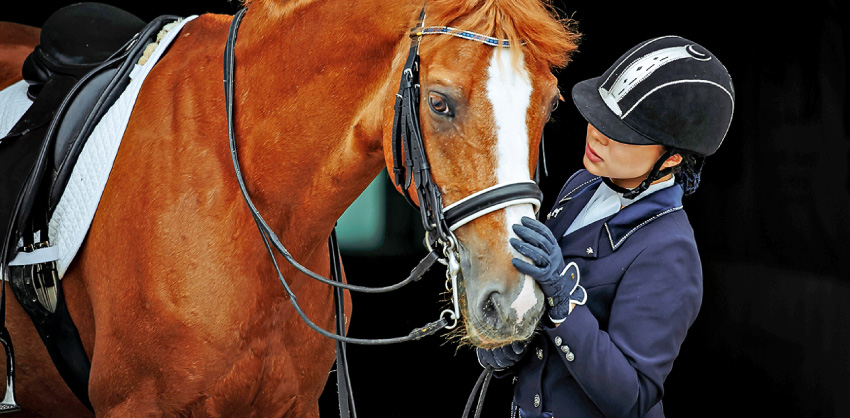
Horses – harness care
Horses are unique, interesting animals full of grace. They are easily trained by people. The Horse is probably the most responsive animal, as it fully replicates the mood and manners of its owner. These animals are large in size but extremely kind.
A top graded equestrian harness is famous for its solidity, usability and durability. But all these features will fade away quickly if you will not care for your harness properly. You should do it regularly during the whole year.
Natural leather remains the main material for a horse harness and indeed for most parts of equestrian outfit production. It’s solid and reliable but flexible and soft. In order for a leather harness to really serve for years, keeping all its features, it requires detailed and regular care.
First of all the storage conditions are important. The Saddle room must be warm, dry and well ventilated. Leather does not like direct sunlight, open heat, wet and frost. All these conditions can lead to a quick deterioration in the leather quality and it can become fragile. Ideally the equestrian harness should be cared for on daily base. After every use the leather should be carefully cleaned.
A synthetic harness clogs the dust faster and impregnates with wet and sweat more easily. So care for synthetic equestrian harness is no less important. Remove dirt and dust with the “soft brush” regularly. For better cleaning use soft sponges or piece of cloth and special cleaning agents. It’s important to pay special attention to the parts of the harness that are in direct contact with the dirt and sweat of the horse. In the bridle and headstall this is the inner part of the straps, leading to the head. In the saddle – the inner part of it and filled saddle flap which makes direct contact with the horses back.
Saddlecloths and horse blankets also require regular cleaning and laundry. Dirty items can cause discomfort and even rub the skin of the horse. Remove clogged wool with a brush before washing in a washing machine. If it has a specific washing instructions better give it to the dry cleaner.
Entrust treatment and care of your favourite friend’s harness and accessories to the professionals at Dry Cleaner Contrast.

A top graded equestrian harness is famous for its solidity, usability and durability. But all these features will fade away quickly if you will not care for your harness properly. You should do it regularly during the whole year.
Natural leather remains the main material for a horse harness and indeed for most parts of equestrian outfit production. It’s solid and reliable but flexible and soft. In order for a leather harness to really serve for years, keeping all its features, it requires detailed and regular care.
First of all the storage conditions are important. The Saddle room must be warm, dry and well ventilated. Leather does not like direct sunlight, open heat, wet and frost. All these conditions can lead to a quick deterioration in the leather quality and it can become fragile. Ideally the equestrian harness should be cared for on daily base. After every use the leather should be carefully cleaned.
A synthetic harness clogs the dust faster and impregnates with wet and sweat more easily. So care for synthetic equestrian harness is no less important. Remove dirt and dust with the “soft brush” regularly. For better cleaning use soft sponges or piece of cloth and special cleaning agents. It’s important to pay special attention to the parts of the harness that are in direct contact with the dirt and sweat of the horse. In the bridle and headstall this is the inner part of the straps, leading to the head. In the saddle – the inner part of it and filled saddle flap which makes direct contact with the horses back.
Saddlecloths and horse blankets also require regular cleaning and laundry. Dirty items can cause discomfort and even rub the skin of the horse. Remove clogged wool with a brush before washing in a washing machine. If it has a specific washing instructions better give it to the dry cleaner.
Entrust treatment and care of your favourite friend’s harness and accessories to the professionals at Dry Cleaner Contrast.
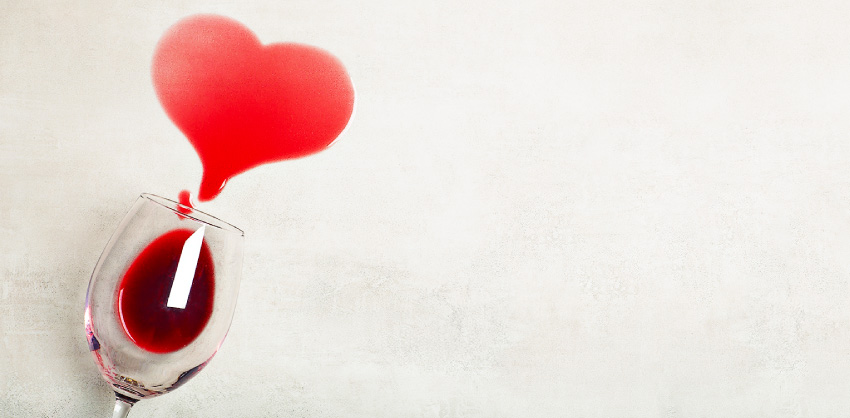
Expensive spots
One awkward movement and a wine stain spreads over the tablecover or favourite dress or snow-white shirt.
Red wine – is the hardest spot to take out. Anthocyans in it absorb quickly into the fabric. So Red wine is the natural dye and any fabric a blank canvas ready to be coloured. Not all varieties of wine are so dangerous. Pinot noir is the most lightly coloured red wine and might not stain, it could be enough to rinse with water. There is no strong scientific proof that white wine helps to remove stains from red wine. Some experts even write that all this is a myth, and the more you pour the more it spreads. However the “Wine community” supports this method.
Wine stains are extremely difficult to remove from clothes or any other fabric as most households know. This red drink contains substances that almost immediately absorb and fix in the fabric structure. Under the air and the sun, wine acidifies and dries quickly and leaves persistent stains.
To avoid permanent damage from difficult stains it’s better not to delay and give the item to professional care – don’t try to remove it yourself which can exacerbate the problem. Experienced professional technologists of the Dry Cleaner “Contrast” are trained regularly with modern processes and have all the necessary equipment, solvents and skills to remove the stains and save the clothing or home item for future use.
According to practical experience after attempts to take the spots out at home people turn to their Dry cleaner to resolve the situation. But please note that dry cleaning cannot always help to restore original appearance, because often after home cleaning the stain becomes fixed and is more difficult to take it off in some cases impossible to remove. Often the stain breaks down and etching occurs leaving a permanent mark.
These two tips will help Dry Cleaner “Contrast” provide a professional service and save your item:-
- Do not keep dirty clothes in the closet. After the end of the season prepare clothes for long storage: clean and repair. It’s better to clean seasonal clothing items twice – in the middle and at the end of the season.
- Don’t let the stains fix on the fabric. If you did not try to remove spots at home, they may remain on the fabric before treatment for no more than:
7 days – fat, grease
24 hours – coloured fatty stains (lipstick, ballpoint pen-juice, etc.),
3-4 days – food protein (milk, butter-milk, mayonnaise, etc.),
1-2 days – blood, tea, coffee, wine, juice, grass.
After these periods the stains are considered old and become more difficult to remove.
- Please do not cut off manufacturers labels with the information about fibrous composition of the item and product care symbols. Information on these labels will help dry cleaning specialists to determine correct method of treatment for your item.
We are waiting for you in any of the 80 “Contrast” Collection Points in Moscow and St. Petersburg. Our professionals are always ready to help you to solve the most difficult cleaning problems – its our job!

Red wine – is the hardest spot to take out. Anthocyans in it absorb quickly into the fabric. So Red wine is the natural dye and any fabric a blank canvas ready to be coloured. Not all varieties of wine are so dangerous. Pinot noir is the most lightly coloured red wine and might not stain, it could be enough to rinse with water. There is no strong scientific proof that white wine helps to remove stains from red wine. Some experts even write that all this is a myth, and the more you pour the more it spreads. However the “Wine community” supports this method.
Wine stains are extremely difficult to remove from clothes or any other fabric as most households know. This red drink contains substances that almost immediately absorb and fix in the fabric structure. Under the air and the sun, wine acidifies and dries quickly and leaves persistent stains.
To avoid permanent damage from difficult stains it’s better not to delay and give the item to professional care – don’t try to remove it yourself which can exacerbate the problem. Experienced professional technologists of the Dry Cleaner “Contrast” are trained regularly with modern processes and have all the necessary equipment, solvents and skills to remove the stains and save the clothing or home item for future use.
According to practical experience after attempts to take the spots out at home people turn to their Dry cleaner to resolve the situation. But please note that dry cleaning cannot always help to restore original appearance, because often after home cleaning the stain becomes fixed and is more difficult to take it off in some cases impossible to remove. Often the stain breaks down and etching occurs leaving a permanent mark.
These two tips will help Dry Cleaner “Contrast” provide a professional service and save your item:-
- Do not keep dirty clothes in the closet. After the end of the season prepare clothes for long storage: clean and repair. It’s better to clean seasonal clothing items twice – in the middle and at the end of the season.
- Don’t let the stains fix on the fabric. If you did not try to remove spots at home, they may remain on the fabric before treatment for no more than:
7 days – fat, grease
24 hours – coloured fatty stains (lipstick, ballpoint pen-juice, etc.),
3-4 days – food protein (milk, butter-milk, mayonnaise, etc.),
1-2 days – blood, tea, coffee, wine, juice, grass.
After these periods the stains are considered old and become more difficult to remove.
- Please do not cut off manufacturers labels with the information about fibrous composition of the item and product care symbols. Information on these labels will help dry cleaning specialists to determine correct method of treatment for your item.
We are waiting for you in any of the 80 “Contrast” Collection Points in Moscow and St. Petersburg. Our professionals are always ready to help you to solve the most difficult cleaning problems – its our job!
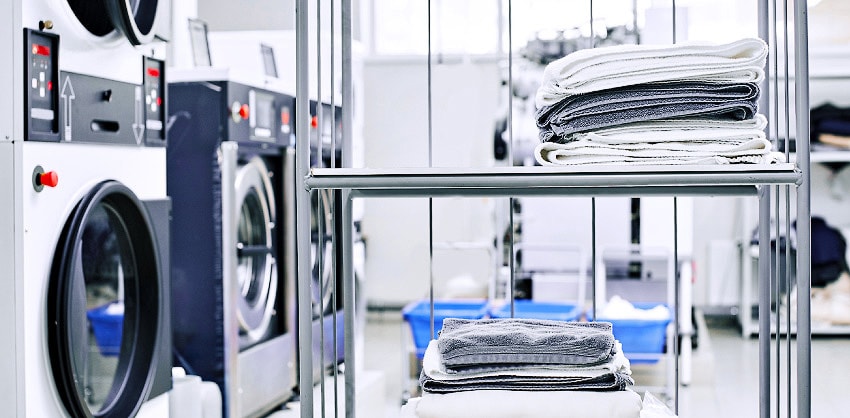
Dry cleaning: from beginning to today
The idea how to keep clothes clean appeared at the same time when people began to cover body with animal skins. It’s hardly to believe that primeval people took care about spots, but there is no doubt that warm comfortable clothes was one of the most important term of survival when the period of mild tropical climate passed off.
Perhaps the profession of laundress or washerwoman is not as old as tailor’s craft but it’s also ancient enough. As you know laundering was the main occupation in the Magdalene’s asylums and even in Odyssey Homer described that Princess and her handmaidens washed their clothes with their own hands and it was not something ashamed or unusual.
Because of fast-paced progress, natural tendency to comfort and not very good weather conditions of the European Continent the first big laundries appeared here. Strict etiquette rules required certain outfit for different occasions and the noble ladies needed a big staff of handmaidens to keep wardrobe in proper condition. French Classic Emil Zola gave very detailed and bright description of one of Paris laundry in the famous novel “Entrapment”. Gervaise, the main character, doing laundry for a living. She works closely with hundreds of other Parisian laundresses. High humidity, constant contact with water and hard physical labor were their eternal companions.
Literary evidence of the eldest sources says that first dry cleaning methods were familiar even to the ancient Romans. It was they who invented the well-known “grandma’s method” to sprinkle fresh spots with salt which absorbs the source of dirt. Speaking about dry cleaning as a chemical process, history gives the garland to the Europeans.
The owner of dye-house Jean Baptiste Jolly accidentally flipped over a bottle of turpentine on the tablecloth covered with greasy spots. And in a while when liquid evaporated, there was no trace of them. Thus the successful Frenchman found a pot of gold and very soon he opened dry cleaning atelier in Paris which brought him fame and fortune.
However there were some traps and pitfalls round: the combustible solvents used for cleaning were very inflammable and dry cleaners very often suffered of fires at that time. Trying to solve this problem, William Joseph Stoddard, a dry cleaning specialist from Atlanta, invented the so-called Stoddard solvent, better known as white spirit. It was much more less fire hazardous, but long contact with this substance affected in not very good manner on staff health.
The invention of perchlorethylene became a real revolution in the field of dry cleaning. It is almost non-flammable and has the ability to remove the most persistent stains without damaging clothes. While it can fairly be considered a real panacea for all stains, you can’t just load clothes into the dry cleaning machine drum, fill it with solvent and just leave them, hoping to get them out clean in a while.
At this point the highly qualified professional machine operator perhaps is more important that all cleaning means. All clothes and items are checked and sorted very carefully before cleaning. Buttons, fasteners and all demontable accessories are taking out and the items that impossible to remove are covered with special protection. Clothes made of very delicate fabrics can be packed in special perforated bags. Spots of different origin require different time of perchlorethylene treatment. In other words, final success and the great appearance of the item depend on many important details.
Today European dry cleaners still remain the ideal model of quality throughout the world. We take into account not only many years of experience and a track record of western colleagues but also specific features of Russian climate and city conditions. We closely monitor the latest trends and achievements in the field of dry cleaning and constantly improve the skills of our specialists. Trusting us to take care of your clothes you can be sure that we do our best to achieve the impeccable result and provide high-class service.

Perhaps the profession of laundress or washerwoman is not as old as tailor’s craft but it’s also ancient enough. As you know laundering was the main occupation in the Magdalene’s asylums and even in Odyssey Homer described that Princess and her handmaidens washed their clothes with their own hands and it was not something ashamed or unusual.
Because of fast-paced progress, natural tendency to comfort and not very good weather conditions of the European Continent the first big laundries appeared here. Strict etiquette rules required certain outfit for different occasions and the noble ladies needed a big staff of handmaidens to keep wardrobe in proper condition. French Classic Emil Zola gave very detailed and bright description of one of Paris laundry in the famous novel “Entrapment”. Gervaise, the main character, doing laundry for a living. She works closely with hundreds of other Parisian laundresses. High humidity, constant contact with water and hard physical labor were their eternal companions.
Literary evidence of the eldest sources says that first dry cleaning methods were familiar even to the ancient Romans. It was they who invented the well-known “grandma’s method” to sprinkle fresh spots with salt which absorbs the source of dirt. Speaking about dry cleaning as a chemical process, history gives the garland to the Europeans.
The owner of dye-house Jean Baptiste Jolly accidentally flipped over a bottle of turpentine on the tablecloth covered with greasy spots. And in a while when liquid evaporated, there was no trace of them. Thus the successful Frenchman found a pot of gold and very soon he opened dry cleaning atelier in Paris which brought him fame and fortune.
However there were some traps and pitfalls round: the combustible solvents used for cleaning were very inflammable and dry cleaners very often suffered of fires at that time. Trying to solve this problem, William Joseph Stoddard, a dry cleaning specialist from Atlanta, invented the so-called Stoddard solvent, better known as white spirit. It was much more less fire hazardous, but long contact with this substance affected in not very good manner on staff health.
The invention of perchlorethylene became a real revolution in the field of dry cleaning. It is almost non-flammable and has the ability to remove the most persistent stains without damaging clothes. While it can fairly be considered a real panacea for all stains, you can’t just load clothes into the dry cleaning machine drum, fill it with solvent and just leave them, hoping to get them out clean in a while.
At this point the highly qualified professional machine operator perhaps is more important that all cleaning means. All clothes and items are checked and sorted very carefully before cleaning. Buttons, fasteners and all demontable accessories are taking out and the items that impossible to remove are covered with special protection. Clothes made of very delicate fabrics can be packed in special perforated bags. Spots of different origin require different time of perchlorethylene treatment. In other words, final success and the great appearance of the item depend on many important details.
Today European dry cleaners still remain the ideal model of quality throughout the world. We take into account not only many years of experience and a track record of western colleagues but also specific features of Russian climate and city conditions. We closely monitor the latest trends and achievements in the field of dry cleaning and constantly improve the skills of our specialists. Trusting us to take care of your clothes you can be sure that we do our best to achieve the impeccable result and provide high-class service.
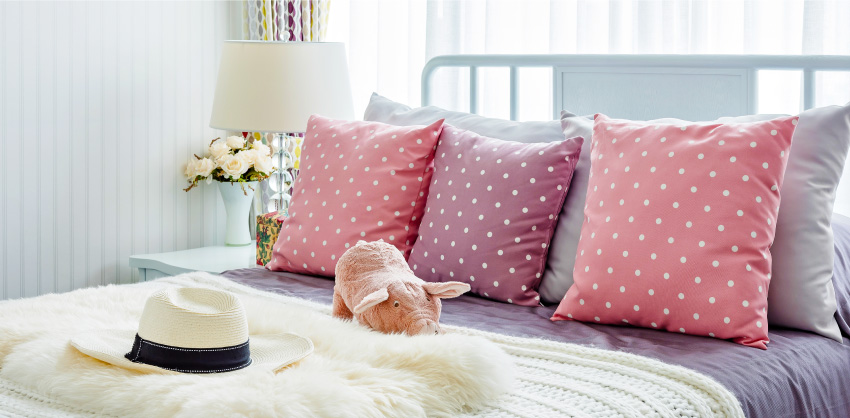
Textiles in the home
The atmosphere of home comfort contains unique little things, which gives each home its distinctive spirit, assembled like parts of mysterious puzzle. And to achieve this one of the main parts of the puzzle belongs to home textiles , that are able to breathe warmth and charm into every corner of your sweet home.
Each of us wants to rest and relax after a busy working day full of different events and meetings. Office or hotel rooms can be very nice and comfortable but you are only able to completely switch off from your everyday life and problems in a really snug home. Modern windows will provide you fresh air and quietness, secure doors will give you feeling of protection and shelter, leather armchairs and a floor lamp will change your mood. But what does it mean to be warm and fuzzy?
Try to remember any place that you feel comfortable – grandma’s house, where you spent your childhood or an old cabin or dacha full of treasures and discoveries. Definitely, in the memory will pop up a festive tablecloth taken out of the family chest only for the most important occasions, or a cozy warm blanket or throw in which you can wrap yourself up in or perhaps lacy napkins on the table. These are just that kind of little thing, which at the first glance, helps you to create your own, unique home sweet home, where you always want to return.
Not everyone is ready to fill their home interior with embroidered pillows and bold prints, but there are few homes without curtains and rugs. These touchstones of home textile are appropriate even if there are modern blinds on the windows and laminated flooring in the house. Because these things first and foremost decorative and not just practical.
Light, short drapes fit for the kitchen and more heavy and dense portieres – for bedroom or living room where it’s so comfortable to take a break from the hustle and bustle of the city. If you don’t like very much big carpets covering full space, choose small bedside mats in the bedroom or an original area rug near the sofa in the living room. Bright carpets and couple of colour-matched curtains and furnishings will transform even the most ascetic interior into a stylish and cozier home. If a plastic tablecloth wins the garland of functionality in the kitchen, on the dining table, even with expensive wood countertop, a tablecloth should appear from time to time. Linen tablecloths are fit for family dinners, silk –for romantic ones, wonderful starch tablecloths for more formal receptions and colourful cotton for a childrens’ party. After all, it’s just these small accents that let you show to the guests how important they are for you and how carefully you have prepared to their visit. And in the same time it will hint your family that tonight is special. Suitable napkins and beautiful settings will definitely fix your reputation of a welcoming host with impeccable taste.
Не каждый готов включить в свой интерьер вышитые подушечки и ивановские ситцы, но нет такого дома, где были бы неуместны шторы и ковёр. Эти «альфа и омега» домашнего текстиля придутся впору даже там, где на окнах висят современные жалюзи, а на полу лежит паркетное покрытие. Ведь функция подобных вещей, прежде всего, не практическая, а декоративная. Лёгкие, короткие занавески будут уместны на кухне, а более основательные и плотные портьеры — в спальне или гостиной, где так хочется отдохнуть от суеты внешнего мира. Если Вас смущает ковёр, занимающий большую площадь комнаты, остановите свой выбор на небольших прикроватных ковриках в спальне или оригинальной дорожке возле дивана в гостиной. Постелив на пол яркий коврик и добавив пару созвучных по цвету деталей в обстановку, можно сделать стильным и вместе с тем уютным даже самый аскетичный интерьер.
Soft and smooth to the touch bedspreads hide from prying eyes the most personal part of any house –the bed. A couple of pillows in contrasting or perhaps colours matching the bedspread will generate the warm atmosphere that should be in the bedroom.
A canopy bed with curtains is one more detail native to Middle Ages that was deservidly discarded in the age of technical progress now returns back step by step into our lives now. It’s not always a bulky wooden structure with dark heavy velvet curtains, that immediately comes into mind. Even anti-mosquito netting can work as bed curtains hung from the ceiling to the corners of the bed and lace drapes on the sides separating symbolically bed zone from the rest space. In the children’s room you can let your imagination run free and decorate a coloured sheer fabric or toile canopy screen with textile butterflies or flowers, this task is easy for any young designer. Every girl will feel herself a real fairy tale princess sleeping on such canopy bed.
In the living room several pillows should be definitely settled on the couch with the whole family relaxing watching movies or looking at family photo albums in the evening. The sweetest dreams, perhaps after lunch or reading a book, are very often caught on the couch under a soft, smooth blanket or throw. If you cover the armchair with the same blanket, throw or knitted bedspread, you can transform familiar furnishing in the blink of the eye. By adding these little but significant touches in the interior of your house you will notice how much more pleasing it is to return home, how warmer and cozier becomes the spirit. Every guest crossing the threshold of your house will comment: “What a lovely welcoming, warming and snug home!”
It’s very important to care for home textiles properly and to give it to dry cleaning on time. Better not to wash interior pillows and other soft goods in the washing machine: they could lose colour, or some attached accessories. We also recommend not to clean or wash natural wool fabrics at home, because they require special delicate treatment.

Each of us wants to rest and relax after a busy working day full of different events and meetings. Office or hotel rooms can be very nice and comfortable but you are only able to completely switch off from your everyday life and problems in a really snug home. Modern windows will provide you fresh air and quietness, secure doors will give you feeling of protection and shelter, leather armchairs and a floor lamp will change your mood. But what does it mean to be warm and fuzzy?
Try to remember any place that you feel comfortable – grandma’s house, where you spent your childhood or an old cabin or dacha full of treasures and discoveries. Definitely, in the memory will pop up a festive tablecloth taken out of the family chest only for the most important occasions, or a cozy warm blanket or throw in which you can wrap yourself up in or perhaps lacy napkins on the table. These are just that kind of little thing, which at the first glance, helps you to create your own, unique home sweet home, where you always want to return.
Not everyone is ready to fill their home interior with embroidered pillows and bold prints, but there are few homes without curtains and rugs. These touchstones of home textile are appropriate even if there are modern blinds on the windows and laminated flooring in the house. Because these things first and foremost decorative and not just practical.
Light, short drapes fit for the kitchen and more heavy and dense portieres – for bedroom or living room where it’s so comfortable to take a break from the hustle and bustle of the city. If you don’t like very much big carpets covering full space, choose small bedside mats in the bedroom or an original area rug near the sofa in the living room. Bright carpets and couple of colour-matched curtains and furnishings will transform even the most ascetic interior into a stylish and cozier home. If a plastic tablecloth wins the garland of functionality in the kitchen, on the dining table, even with expensive wood countertop, a tablecloth should appear from time to time. Linen tablecloths are fit for family dinners, silk –for romantic ones, wonderful starch tablecloths for more formal receptions and colourful cotton for a childrens’ party. After all, it’s just these small accents that let you show to the guests how important they are for you and how carefully you have prepared to their visit. And in the same time it will hint your family that tonight is special. Suitable napkins and beautiful settings will definitely fix your reputation of a welcoming host with impeccable taste.
Не каждый готов включить в свой интерьер вышитые подушечки и ивановские ситцы, но нет такого дома, где были бы неуместны шторы и ковёр. Эти «альфа и омега» домашнего текстиля придутся впору даже там, где на окнах висят современные жалюзи, а на полу лежит паркетное покрытие. Ведь функция подобных вещей, прежде всего, не практическая, а декоративная. Лёгкие, короткие занавески будут уместны на кухне, а более основательные и плотные портьеры — в спальне или гостиной, где так хочется отдохнуть от суеты внешнего мира. Если Вас смущает ковёр, занимающий большую площадь комнаты, остановите свой выбор на небольших прикроватных ковриках в спальне или оригинальной дорожке возле дивана в гостиной. Постелив на пол яркий коврик и добавив пару созвучных по цвету деталей в обстановку, можно сделать стильным и вместе с тем уютным даже самый аскетичный интерьер.
Soft and smooth to the touch bedspreads hide from prying eyes the most personal part of any house –the bed. A couple of pillows in contrasting or perhaps colours matching the bedspread will generate the warm atmosphere that should be in the bedroom.
A canopy bed with curtains is one more detail native to Middle Ages that was deservidly discarded in the age of technical progress now returns back step by step into our lives now. It’s not always a bulky wooden structure with dark heavy velvet curtains, that immediately comes into mind. Even anti-mosquito netting can work as bed curtains hung from the ceiling to the corners of the bed and lace drapes on the sides separating symbolically bed zone from the rest space. In the children’s room you can let your imagination run free and decorate a coloured sheer fabric or toile canopy screen with textile butterflies or flowers, this task is easy for any young designer. Every girl will feel herself a real fairy tale princess sleeping on such canopy bed.
In the living room several pillows should be definitely settled on the couch with the whole family relaxing watching movies or looking at family photo albums in the evening. The sweetest dreams, perhaps after lunch or reading a book, are very often caught on the couch under a soft, smooth blanket or throw. If you cover the armchair with the same blanket, throw or knitted bedspread, you can transform familiar furnishing in the blink of the eye. By adding these little but significant touches in the interior of your house you will notice how much more pleasing it is to return home, how warmer and cozier becomes the spirit. Every guest crossing the threshold of your house will comment: “What a lovely welcoming, warming and snug home!”
It’s very important to care for home textiles properly and to give it to dry cleaning on time. Better not to wash interior pillows and other soft goods in the washing machine: they could lose colour, or some attached accessories. We also recommend not to clean or wash natural wool fabrics at home, because they require special delicate treatment.
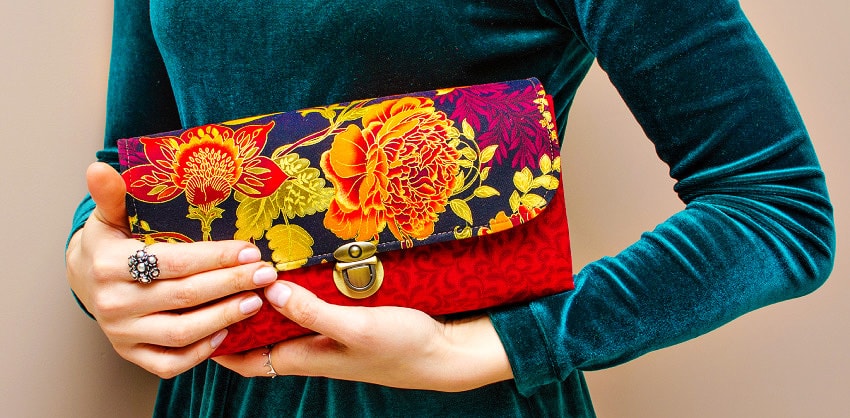
Bag – the most important detail of the image.
Nowadays you can hardly imagine woman of any age and occupation, who are able to go out without a bag. Ladies have trust in their everlasting companions so different kinds of secrets. Often clutch or reticule tells about their owner no less than personal dairy.
Mary Poppins carried a carpetbag that could fit for several suitcases, “but the nanny’s bag became a magical carry-all that contained an apron, a packet of hairpins, a bottle of scent, a small folding armchair, a packet of throat lozenges, a large bottle of dark red medicine, seven flannel nightgowns, one pair of boots, a set of dominoes, two bathing caps, one postcard album, one folding camp bedstead, blankets and an eiderdown.” This is just a fairy tale, but often even the tiniest ladies’ handbag somehow fits things for all occasions.
The bag has never been a part of just a ladies’ outfit. Backpacks, purses and brief cases are very popular among the strongest part of the population at all times. But it’s ladies’ bags which are notable for incredible variety of shapes, colours, accessories and materials.
Durability and capacity –were the only requirements to the ancient ancestors of the modern bags, as they were not a fashion accessory but a tool (means) to carry things only. The bag has come a long way from the grass-woven bin and animal skin folded and tied in a knot, before it became to look like items we are wearing today. Back in the old days “bags” were more often called “Loads, bundles, portemonnaies, or reticules”. Even The Bible mentions pouches. In the 14th century ladies bags began to display social status and evolved into wedding gift from groom to a bride.
With progress and a growth in the standard of life people spend more effort and time to decorate items around them. Bags were decorated with slots, pieces of fur and leather, claws and fangs, and cutouts (applique). There were several ways how they could be designed to allow them to be carried: it could be a strap for the shoulder or around the neck, or two straps behind the back, the predecessor of the modern backpack. A traditional Pannier consists of two bags connected with common base to distribute weight evenly on both sides of the animal. With the advent of money, one more type of bag appeared, that we now know as a wallet. It was drawstring bag or an envelope with a flap, which would be attached to the belt or clothing.
Wealthy citizens wore bags made of leather or velvet, peasants – of canvas.
For many centuries women did not use handbags at all. example, In Russia. for example, they used long sleeves, scrunched up at the wrist, as a pocket. Hair pick, scissors, mirror, keys more often were fastened to the belt via some cord, and the most valuable things were hidden on the chest under the dress, bodice or in the stocking. During the Renaissance, English fashion was more chic than ever before. Women hid their pouches underneath the vast array of pettycoats and men wore leather pockets inside their breeches.
An immediate predecessor of the modern handbag was a drawstring bag with lock in the shape of a Gothic Temple. It was very popular in Royal Burgundy in the14th Century. Men and women tied it to the belt. And only four hundred years later the pompadour, the first ladies handbag in its true sense, was invented. It got its name after a famous King’s mistress. The velvet or lace purses were intended mainly for holding needlework as, according to the high society etiquette of that time, ladies have to embroider during long social meetings. Ladies put, not only threads and needles in it, but a handkerchief, a scent bottle with smelling salts and a blush jar. After minor transformations this sack got the name reticule later on, and became a classic item for a long period until the beginning of 20th century. Same name had handbags made of fabric on a dense lining, embroidered with beads or silk, they had a metal frame and a fermail – a clasp with two balls. Non wealthy ladies often sewed reticules themselves from fabric leftovers remained after the gala dress making.
On the cusp of 19th – 20th centuries bags made from steel or silver mesh were extremely popular. The majority of fine ladies used handbags only in the evening, going to the theatre or making visits. It was obligatory to have binoculars, perfume bottle and bonbonniere for candies. In the daytime, all that the lady needed was a handkerchief, powder box and wallet. All of them fitted in the hidden skirt pocket easily. There was no need to carry keys, because the doorkeeper or footman opened the door, and all purchases were delivered by the store right to the house.
After WWI the overwhelming majority of women had different and new work activities than needlework, they needed really versatile and usable bags. At that time big and capacious hard leather bags appeared. Later on business women took over such typically male accessories as cases and briefcases.
In the 1960’s there was a real boom in handbag production. Terse silhouettes of the dresses of that period required some distinctive accessories, and apart from its main, practical function the bag again had to fulfill decorative one. It seems handbags were thrown in all possible shapes and in all possible materials. In the Amsterdam Bag Museum there are showpieces made of coconut and tortoiseshell amongst many other interesting examples.
A real legend of a bag and a dream of many woman is a Birkin handbag by the leading French fashion house Hermes, which is a must have for celebrities and first ladies alike. This bag, named after actress and singer Jane Birkin, is totally handmade, and the queue in a branded atelier can last up to several years. Price begins from several thousand dollars and goes to infinity. For some models all details including the zipper are made of gold. Traditionally this bag is made of calfskin, but recently some models created from exotic animal skins, like an alligator or an iguana, became very popular. Soft goatskin lining and a fastener in the form of lock with fancy key are the significant features of the bag.
It does not matter what the bag is, luxury or democratic, extravagant or understated, it is one of the most important elements for the image of its owner. After all, girls have to trust it with their most valuable and necessary things. That is why proper care of the bag guarantees to its owner an impeccable image. Leather bags are very whimsical and can’t stand washing or other water treatment. Dry cleaning a textile or suede bag will help to keep original appearance much longer. Dry cleaning – is a technological process that treats the item with special organic solvents. Basically, dry cleaning is used for leather items.

Mary Poppins carried a carpetbag that could fit for several suitcases, “but the nanny’s bag became a magical carry-all that contained an apron, a packet of hairpins, a bottle of scent, a small folding armchair, a packet of throat lozenges, a large bottle of dark red medicine, seven flannel nightgowns, one pair of boots, a set of dominoes, two bathing caps, one postcard album, one folding camp bedstead, blankets and an eiderdown.” This is just a fairy tale, but often even the tiniest ladies’ handbag somehow fits things for all occasions.
The bag has never been a part of just a ladies’ outfit. Backpacks, purses and brief cases are very popular among the strongest part of the population at all times. But it’s ladies’ bags which are notable for incredible variety of shapes, colours, accessories and materials.
Durability and capacity –were the only requirements to the ancient ancestors of the modern bags, as they were not a fashion accessory but a tool (means) to carry things only. The bag has come a long way from the grass-woven bin and animal skin folded and tied in a knot, before it became to look like items we are wearing today. Back in the old days “bags” were more often called “Loads, bundles, portemonnaies, or reticules”. Even The Bible mentions pouches. In the 14th century ladies bags began to display social status and evolved into wedding gift from groom to a bride.
With progress and a growth in the standard of life people spend more effort and time to decorate items around them. Bags were decorated with slots, pieces of fur and leather, claws and fangs, and cutouts (applique). There were several ways how they could be designed to allow them to be carried: it could be a strap for the shoulder or around the neck, or two straps behind the back, the predecessor of the modern backpack. A traditional Pannier consists of two bags connected with common base to distribute weight evenly on both sides of the animal. With the advent of money, one more type of bag appeared, that we now know as a wallet. It was drawstring bag or an envelope with a flap, which would be attached to the belt or clothing.
Wealthy citizens wore bags made of leather or velvet, peasants – of canvas.
For many centuries women did not use handbags at all. example, In Russia. for example, they used long sleeves, scrunched up at the wrist, as a pocket. Hair pick, scissors, mirror, keys more often were fastened to the belt via some cord, and the most valuable things were hidden on the chest under the dress, bodice or in the stocking. During the Renaissance, English fashion was more chic than ever before. Women hid their pouches underneath the vast array of pettycoats and men wore leather pockets inside their breeches.
An immediate predecessor of the modern handbag was a drawstring bag with lock in the shape of a Gothic Temple. It was very popular in Royal Burgundy in the14th Century. Men and women tied it to the belt. And only four hundred years later the pompadour, the first ladies handbag in its true sense, was invented. It got its name after a famous King’s mistress. The velvet or lace purses were intended mainly for holding needlework as, according to the high society etiquette of that time, ladies have to embroider during long social meetings. Ladies put, not only threads and needles in it, but a handkerchief, a scent bottle with smelling salts and a blush jar. After minor transformations this sack got the name reticule later on, and became a classic item for a long period until the beginning of 20th century. Same name had handbags made of fabric on a dense lining, embroidered with beads or silk, they had a metal frame and a fermail – a clasp with two balls. Non wealthy ladies often sewed reticules themselves from fabric leftovers remained after the gala dress making.
On the cusp of 19th – 20th centuries bags made from steel or silver mesh were extremely popular. The majority of fine ladies used handbags only in the evening, going to the theatre or making visits. It was obligatory to have binoculars, perfume bottle and bonbonniere for candies. In the daytime, all that the lady needed was a handkerchief, powder box and wallet. All of them fitted in the hidden skirt pocket easily. There was no need to carry keys, because the doorkeeper or footman opened the door, and all purchases were delivered by the store right to the house.
After WWI the overwhelming majority of women had different and new work activities than needlework, they needed really versatile and usable bags. At that time big and capacious hard leather bags appeared. Later on business women took over such typically male accessories as cases and briefcases.
In the 1960’s there was a real boom in handbag production. Terse silhouettes of the dresses of that period required some distinctive accessories, and apart from its main, practical function the bag again had to fulfill decorative one. It seems handbags were thrown in all possible shapes and in all possible materials. In the Amsterdam Bag Museum there are showpieces made of coconut and tortoiseshell amongst many other interesting examples.
A real legend of a bag and a dream of many woman is a Birkin handbag by the leading French fashion house Hermes, which is a must have for celebrities and first ladies alike. This bag, named after actress and singer Jane Birkin, is totally handmade, and the queue in a branded atelier can last up to several years. Price begins from several thousand dollars and goes to infinity. For some models all details including the zipper are made of gold. Traditionally this bag is made of calfskin, but recently some models created from exotic animal skins, like an alligator or an iguana, became very popular. Soft goatskin lining and a fastener in the form of lock with fancy key are the significant features of the bag.
It does not matter what the bag is, luxury or democratic, extravagant or understated, it is one of the most important elements for the image of its owner. After all, girls have to trust it with their most valuable and necessary things. That is why proper care of the bag guarantees to its owner an impeccable image. Leather bags are very whimsical and can’t stand washing or other water treatment. Dry cleaning a textile or suede bag will help to keep original appearance much longer. Dry cleaning – is a technological process that treats the item with special organic solvents. Basically, dry cleaning is used for leather items.
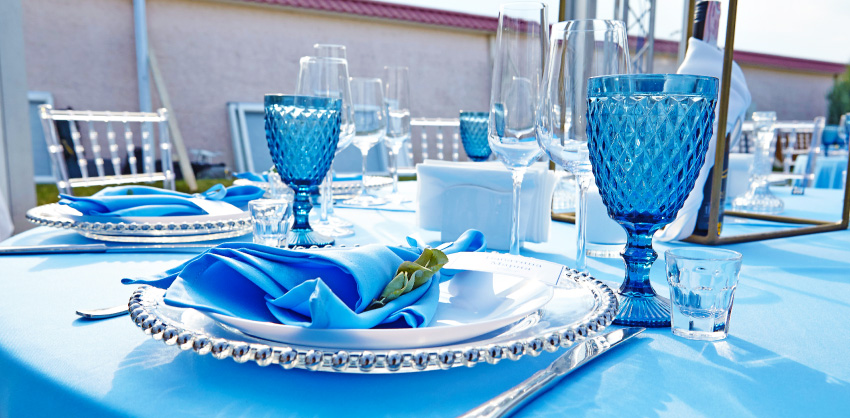
Новый взгляд на скатерть
Постелить на стол красивую, нарядную, отглаженную скатерть — наверное, самый простой и быстрый способ преобразить интерьер и создать праздничное настроение в доме.
В шкафу хорошей хозяйки найдутся скатерти для каждого случая — льняные, кружевные, вязаные крючком, вышитые. Хотя времена пышных балов и званых приёмов остались в далёком прошлом, и по сей день существуют определённые правила подбора столового белья к тому или иному случаю.
Выбор материала, из которого изготовлена скатерть, напрямую зависит от характера мероприятия, для проведения которого Вы оформляете стол. Если ужин приурочен к серьёзному, торжественному событию, главная задача скатерти — выгодно оттенить сияющий хрусталь бокалов и столовое серебро, поэтому лучше отдать предпочтение светлой однотонной ткани, не перегруженной декоративными деталями — вышивкой, рисунком и т.д. Того же правила стоит придерживаться, если на тарелках есть рисунок — скатерть может быть цветной, в тон рисунка, но обязательно однотонной, иначе стол получится пёстрым и неряшливым.
Если же Вы хотите сделать акцент на скатерти, оформление тарелок и бокалов должно быть сдержанным. Нарядно и стильно выглядит стол, оформленный двумя однотонными скатертями — светлой по размеру стола и яркой меньшего размера в центре.
При выборе тканей лучше отдавать предпочтение натуральным материалам, таким как лён и хлопок. Они не только экологичны и безопасны, но и долговечны. При правильном уходе льняная скатерть и салфетки прослужат Вам не один год, и вполне могут стать неизменными спутниками Ваших главных семейных торжеств.
С древних времён скатерти были одним из важнейших элементов приданого девушки любого достатка, ведь от того, что невеста принесёт с собой в новый дом, зависели уют и теплота домашнего очага. На отделку рушников, скатертей и салфеток тратили до нескольких лет, с детства и до самого замужества. Сегодня же практически любую скатерть можно купить, но даже самая дорогая ткань всё равно требует бережного ухода.
Чтобы подготовка к семейному торжеству не была омрачена неприятным сюрпризом в виде пятен на скатерти и салфетках, оставшихся с прошлого застолья, соблюдайте некоторые рекомендации относительно ухода за Вашей скатертью. Они помогут сохранить Ваше столовое бельё в безупречном виде, и Вы всегда будете готовы к приёму даже самых неожиданных гостей.
Самый главный враг любой скатерти — застарелые пятна. Даже если это просто капля масла или безобидный соус, которые легко устранить сразу после застолья, они могут навсегда испортить скатерть, если убрать её в шкаф на длительное время. Внимательно осмотрите скатерть и салфетки после ужина, когда из Вашей памяти ещё не стёрлось праздничное меню, и можно с уверенностью предположить, каково происхождение тех или иных пятен. Однако даже после этого не стоит тут же класть скатерть в стиральную машину, так как одни виды пятен требуют предварительной обработки, а другие вообще нельзя вывести после того, как они были застираны.
Если после романтического ужина на скатерти остался парафин от свечей, его легко удалить, положив снизу и сверху ткани бумажную салфетку и прогладив пятно горячим утюгом несколько раз. Учтите, что если Вы используете свечи из цветного парафина, краситель может оставить на ткани пятна, вывести которые будет намного сложнее, поэтому такие свечи лучше ставить на подставку, которая предохранит скатерть от горячих капель. Также своего рода подводными камнями являются пятна от белого вина и яблочного сока — они не всегда видны сразу, но от них нелегко избавиться в дальнейшем. Мы рекомендуем пользоваться услугами химчистки. Технолог оценит качество ткани и оптимальный способ обработки, чтобы удалить остатки парафина, который может повредить нити и пятна от напитков.
Один из самых известных способов борьбы с пятнами — обычная столовая соль. Посыпав ею свежее пятно от вина, кофе или сока, можно существенно увеличить шансы отстирать скатерть впоследствии. Соль впитывает жидкость, препятствуя контакту ткани с красящим веществом, а Вы избавляетесь от необходимости немедленно застирывать скатерть. Предупреждаем, что этот способ не гарантирует, что пятно исчезнет совсем.
Какую бы ткань Вы не выбрали для Вашего стола и какими бы экзотическими не были блюда за ужином, доверьте уход за Вашим столовым бельём профессионалам химчистки «Контраст». Вы не только избавите себя от хлопот, но и продлите жизнь любимой скатерти, чтобы она могла радовать Вас снова и снова, а о застольях оставались только самые приятные воспоминания.

В шкафу хорошей хозяйки найдутся скатерти для каждого случая — льняные, кружевные, вязаные крючком, вышитые. Хотя времена пышных балов и званых приёмов остались в далёком прошлом, и по сей день существуют определённые правила подбора столового белья к тому или иному случаю.
Выбор материала, из которого изготовлена скатерть, напрямую зависит от характера мероприятия, для проведения которого Вы оформляете стол. Если ужин приурочен к серьёзному, торжественному событию, главная задача скатерти — выгодно оттенить сияющий хрусталь бокалов и столовое серебро, поэтому лучше отдать предпочтение светлой однотонной ткани, не перегруженной декоративными деталями — вышивкой, рисунком и т.д. Того же правила стоит придерживаться, если на тарелках есть рисунок — скатерть может быть цветной, в тон рисунка, но обязательно однотонной, иначе стол получится пёстрым и неряшливым.
Если же Вы хотите сделать акцент на скатерти, оформление тарелок и бокалов должно быть сдержанным. Нарядно и стильно выглядит стол, оформленный двумя однотонными скатертями — светлой по размеру стола и яркой меньшего размера в центре.
При выборе тканей лучше отдавать предпочтение натуральным материалам, таким как лён и хлопок. Они не только экологичны и безопасны, но и долговечны. При правильном уходе льняная скатерть и салфетки прослужат Вам не один год, и вполне могут стать неизменными спутниками Ваших главных семейных торжеств.
С древних времён скатерти были одним из важнейших элементов приданого девушки любого достатка, ведь от того, что невеста принесёт с собой в новый дом, зависели уют и теплота домашнего очага. На отделку рушников, скатертей и салфеток тратили до нескольких лет, с детства и до самого замужества. Сегодня же практически любую скатерть можно купить, но даже самая дорогая ткань всё равно требует бережного ухода.
Чтобы подготовка к семейному торжеству не была омрачена неприятным сюрпризом в виде пятен на скатерти и салфетках, оставшихся с прошлого застолья, соблюдайте некоторые рекомендации относительно ухода за Вашей скатертью. Они помогут сохранить Ваше столовое бельё в безупречном виде, и Вы всегда будете готовы к приёму даже самых неожиданных гостей.
Самый главный враг любой скатерти — застарелые пятна. Даже если это просто капля масла или безобидный соус, которые легко устранить сразу после застолья, они могут навсегда испортить скатерть, если убрать её в шкаф на длительное время. Внимательно осмотрите скатерть и салфетки после ужина, когда из Вашей памяти ещё не стёрлось праздничное меню, и можно с уверенностью предположить, каково происхождение тех или иных пятен. Однако даже после этого не стоит тут же класть скатерть в стиральную машину, так как одни виды пятен требуют предварительной обработки, а другие вообще нельзя вывести после того, как они были застираны.
Если после романтического ужина на скатерти остался парафин от свечей, его легко удалить, положив снизу и сверху ткани бумажную салфетку и прогладив пятно горячим утюгом несколько раз. Учтите, что если Вы используете свечи из цветного парафина, краситель может оставить на ткани пятна, вывести которые будет намного сложнее, поэтому такие свечи лучше ставить на подставку, которая предохранит скатерть от горячих капель. Также своего рода подводными камнями являются пятна от белого вина и яблочного сока — они не всегда видны сразу, но от них нелегко избавиться в дальнейшем. Мы рекомендуем пользоваться услугами химчистки. Технолог оценит качество ткани и оптимальный способ обработки, чтобы удалить остатки парафина, который может повредить нити и пятна от напитков.
Один из самых известных способов борьбы с пятнами — обычная столовая соль. Посыпав ею свежее пятно от вина, кофе или сока, можно существенно увеличить шансы отстирать скатерть впоследствии. Соль впитывает жидкость, препятствуя контакту ткани с красящим веществом, а Вы избавляетесь от необходимости немедленно застирывать скатерть. Предупреждаем, что этот способ не гарантирует, что пятно исчезнет совсем.
Какую бы ткань Вы не выбрали для Вашего стола и какими бы экзотическими не были блюда за ужином, доверьте уход за Вашим столовым бельём профессионалам химчистки «Контраст». Вы не только избавите себя от хлопот, но и продлите жизнь любимой скатерти, чтобы она могла радовать Вас снова и снова, а о застольях оставались только самые приятные воспоминания.

Советы по хранению и уход за мехом
Слагаемые успеха - ежегодная химчистка шубы, проветривание, хранение в необходимых условиях и своевременная реставрация.
- Идеальными для хранения меха условиями являются 58% влажности при 7 градусах по Цельсию. При хранении шубы в домашних условиях, используйте вешалку и не закрывайте ее пластиком. Пластик, в котором нет пор для циркуляции воздуха, не даст возможности шубе дышать. Это приведет к иссушению кожи, и преждевременно состарит шубу. При необходимости, используется тканевой мешок или чехол «Контраст» из спанбонда .
- Найдите место в доме, где не очень влажно или сухо. Для Вашей шубы необходима вентиляция воздуха. Создайте необходимое пространство для Вашей шубы или другой верхней одежды в Вашем гардеробе. Не используйте анти-молевые препараты, поскольку они оставляют неприятную отдушку на мехе. Мы рекомендуем рядом с шубой разместить натуральные ароматизаторы: кедровые шарики или саше с лавандой.
- Не сидите долгое время в шубе, так как это приведет к заломам и преждевременному износу.
- Воздерживайтесь от чрезмерного ношения сумок на ремнях, так как это может привести к преждевременному износу меха в местах трения.
- В случае намокания шубы, встряхните и высушите натуральным способом в открытом пространстве на плечиках при комнатной температуре. Использование обогревательных приборов приведет к иссушиванию меха и кожи.
- Отдавать шубу в химчистку необходимо каждый сезон. Полностью удалить запахи и поверхностный налет улицы с меха в домашних условиях невозможно. И помните главное – моль «любит» грязный засаленный мех. Не стоит пренебрегать этим правилом, так как только с помощью правильного ухода, Ваша шуба на долго сохранит внешний вид.
- Важно при химчистке чистить не только мех, но и подкладку. Это наиболее трудоемкий процесс и часто мы рекомендуем менять подклад. Данную услугу выполнят быстро и качественно мастера ателье «Контраст»
- Немедленно зашивайте любые маленькие прорехи. Промедление может привести к дорогостоящим реставрационным работам по замене кусков меха. Но для качественной реставрации повреждений меха необходимы специальные материалы и оборудование.
Проветривание и правильная чистка Вашей шубы или иной верхней одежды в большинстве случаем предохранят Вас от нежелательных запахов.

- Идеальными для хранения меха условиями являются 58% влажности при 7 градусах по Цельсию. При хранении шубы в домашних условиях, используйте вешалку и не закрывайте ее пластиком. Пластик, в котором нет пор для циркуляции воздуха, не даст возможности шубе дышать. Это приведет к иссушению кожи, и преждевременно состарит шубу. При необходимости, используется тканевой мешок или чехол «Контраст» из спанбонда .
- Найдите место в доме, где не очень влажно или сухо. Для Вашей шубы необходима вентиляция воздуха. Создайте необходимое пространство для Вашей шубы или другой верхней одежды в Вашем гардеробе. Не используйте анти-молевые препараты, поскольку они оставляют неприятную отдушку на мехе. Мы рекомендуем рядом с шубой разместить натуральные ароматизаторы: кедровые шарики или саше с лавандой.
- Не сидите долгое время в шубе, так как это приведет к заломам и преждевременному износу.
- Воздерживайтесь от чрезмерного ношения сумок на ремнях, так как это может привести к преждевременному износу меха в местах трения.
- В случае намокания шубы, встряхните и высушите натуральным способом в открытом пространстве на плечиках при комнатной температуре. Использование обогревательных приборов приведет к иссушиванию меха и кожи.
- Отдавать шубу в химчистку необходимо каждый сезон. Полностью удалить запахи и поверхностный налет улицы с меха в домашних условиях невозможно. И помните главное – моль «любит» грязный засаленный мех. Не стоит пренебрегать этим правилом, так как только с помощью правильного ухода, Ваша шуба на долго сохранит внешний вид.
- Важно при химчистке чистить не только мех, но и подкладку. Это наиболее трудоемкий процесс и часто мы рекомендуем менять подклад. Данную услугу выполнят быстро и качественно мастера ателье «Контраст»
- Немедленно зашивайте любые маленькие прорехи. Промедление может привести к дорогостоящим реставрационным работам по замене кусков меха. Но для качественной реставрации повреждений меха необходимы специальные материалы и оборудование.
Проветривание и правильная чистка Вашей шубы или иной верхней одежды в большинстве случаем предохранят Вас от нежелательных запахов.

How to iron shirt correctly?
Only very proficient housewives are able to achieve an ideal result, because you have to deal with a lot of difficulties with small details, folds near the cuff and creases. Pressing of one shirt accurately can often take 15 minutes.
General principle of ironing – is to press the small details first, and then go to the larger areas.
Step 1 – Preparation
Install ironing board and prepare the shirt for ironing.
Heat the iron: for cotton – 150°C, for linen – 220°C, for polyester – 110°C.
If the shirt is too dry, lightly spray some water on it to get a better finish and remove stubborn creases but usually a steam iron generally handles most items.
Step 2 – Collar
Pressing the collar. Beginning from the inner side of the collar. Then you can iron the front side.
Step 3 – Cuffs
Ironing the cuffs on the sleeves. First from the inner side, then on the front one. To do this we have to straighten out the cuff and press it in one movement.
Step 4 – Sleeves
Pressing the sleeves. To do this, please fold the sleeve along the seam, iron both sides closer to the stitch, trying not to make arrows on the central part of the sleeve. Then we fold sleeve so that seam was in the middle and on the bottom. Press carefully central part of the sleeve.
Step 5 – Large details
Iron one by one, straighten out each detail carefully on the iron board:
- Front right half
- Back
- Front left half
Entrust this work to professionals of Contrast Dry Cleaner, save your energy and time and receive your starched (as you prefer) shirts hung or folded for travel, perfectly packaged.

General principle of ironing – is to press the small details first, and then go to the larger areas.
Step 1 – Preparation
Install ironing board and prepare the shirt for ironing.
Heat the iron: for cotton – 150°C, for linen – 220°C, for polyester – 110°C.
If the shirt is too dry, lightly spray some water on it to get a better finish and remove stubborn creases but usually a steam iron generally handles most items.
Step 2 – Collar
Pressing the collar. Beginning from the inner side of the collar. Then you can iron the front side.
Step 3 – Cuffs
Ironing the cuffs on the sleeves. First from the inner side, then on the front one. To do this we have to straighten out the cuff and press it in one movement.
Step 4 – Sleeves
Pressing the sleeves. To do this, please fold the sleeve along the seam, iron both sides closer to the stitch, trying not to make arrows on the central part of the sleeve. Then we fold sleeve so that seam was in the middle and on the bottom. Press carefully central part of the sleeve.
Step 5 – Large details
Iron one by one, straighten out each detail carefully on the iron board:
- Front right half
- Back
- Front left half
Entrust this work to professionals of Contrast Dry Cleaner, save your energy and time and receive your starched (as you prefer) shirts hung or folded for travel, perfectly packaged.










